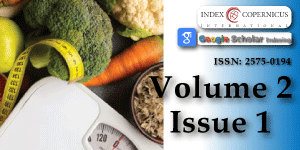Chemical composition and organoleptic properties of Cocoyam starch-wheat flour blend noodles
Main Article Content
Abstract
Noodles are strips or strands cut from a sheet of dough made from flour, water and either common salt or a mixture of alkaline salt. Noodles consumption represents about 40% of the total wheat flour which are mainly consumed by school children. The use of composite flour has been encouraged since it reduces the importation of wheat. Utilization of locally available, inexpensive materials like cocoyam that can substitute a part of wheat flour without adversely affecting the acceptability of the product will be a product development. This study therefore studied the chemical composition and organoleptic properties of instant noodles from the blend of wheat and cocoyam starch. Cocoyam starch was substituted into wheat flour at 20, 40, 60 & 80%. Analysis revealed higher carbohydrate (63.50-70.05)%, moisture (4.54-5.07)% and vitamin A (10.01-30.47) mg/100g, B1 (11.43-32.15) mg/100g but lower protein (4.56-8.79)%, phosphorus (0.34-0.52)%, calcium (1.83-0.98)%, iron (0.15-0.32) % and ash (1.19-3.20)%. The composite noodles revealed higher carbohydrate and mineral but lower protein than the commercial noodles. The sensory analysis revealed that 20% cocoyam compared favourably with the commercial noodles in terms of all the sensory attributes evaluated. This shows the possibility of producing noodles from cocoyam tubers which serves as novel food. This will further help to promote and improve utilization of cocoyam tuber.
Article Details
Copyright (c) 2017 Adedeji TO.

This work is licensed under a Creative Commons Attribution 4.0 International License.
Shirao Y, Moss H. Suitability of the Australian wheat and flour for noodle production. Cereal Chemistry Conference RACI. 1978; 37-38.
Lorenz K, Dilsaver W. Buck wheat (Fagopyrum escutenlum) starch physico-chemical properties and functional characteristic. Starch Starker. 1982; 34: 217-220.
Hou, GA. Asian noodles technology. AB Technical Bulletin XX. American Institute of Banking. 1998; 20. Ref.: https://goo.gl/6DQLN2
Onwueme IC, Charles WB. Cultivation of Cocoyam in Tropical root and Tuber crops. Production, perspectives and future prospects. 1994. Ref.: https://goo.gl/22n7XM
Onwueme IC. Colocasia and Xanthosoma (Cocoyam) in the Tropical Tuber Crops: Yams, Cassava, Sweet potato and Cocoyam Journal of Willey and Sons Ltd. 1998; 589-606.
Davies EM, Labuschagne MT, Koen E, Benensi IR, Saka DK. Some properties of starches from cocoyam in Malawi. Afri J Food Science. 2008; 2: 102-111. Ref.: https://goo.gl/oNTYsn
Tambong JT, Ndzana X, Wutoh TG, Dadson R. Variability and germplasm loss in Cameroon national collection of cocoyam (Xanthosoma sagittifolium) Plant genetics Resources Newsletter. 1997; 12: 4-9. Ref.: https://goo.gl/bqouM1
Nwabuzor EC. Nematode problems and solutions of root and tuber crops in Nigeria. In: Akoroda MO, Ngeve JM. Proceedings of the 7th Triennial Symposium of the International Society for Tropical Root Crops (ISTRC). Cotonou. 2001; 545-552.
Enyinnia CN. Cocoyam, food self-sufficiency and policy in East and Southern Africa. Food Policy. 2001; 15: 383-394.
Asadu AN. Causes of decline in cocoyam production among farmers in Enugu State. Department of Agricultural Extension. University of Nigeria. 2006.
Ezenwa AJ. Enhancing production and processing of cocoyam among farmers in Ihiala Local Government Area of Anambra State. Department of Agricultural Extension. University of Nigeria. 2010.
Dexter JE. Asian noodles products. In Christian GL, Smith JS (eds.) Food Chemistry, Principles and Application, a Workshop. 1995.
AOAC. Official Methods of Analysis of the Association of Analytical Chemists 17th ed. Washington DC. 2000.
Tahir A, Sumati N. Manuals of Soil Plant and Water Analysis. Indian, Daya Publishing House. 2009; 130-140. Ref.: https://goo.gl/M9ABys
Iwe MO. Handbook of sensory methods and analysis. Re-joint Communications Services Ltd. 2010; 75-78. Ref.: https://goo.gl/nvGYrL
FAO. Food and Agriculture Organization. Sweet Potatoes Production.109 record. Italy. 2001.
Woofle JA. Sweet Potato: An Untapped Food Resource. Cab direct. 1992. Ref.: https://goo.gl/NFqPzC
Sanni OI, Bamgbose OC, Sanni AS. Production of instant cassava noodles. J Food Technol. 2004; 2: 83-89. Ref.: https://goo.gl/c8vubt
Anon. Group says ramen demand to double by 2010. Milling and Baking News. 1999; 51-77.
Miskally DM, Moss HJ. Flour quality requirement for Chinese noodles manufacture. Cereal Science. 1985; 33: 79-87. Ref.: https://goo.gl/HjvRo5

